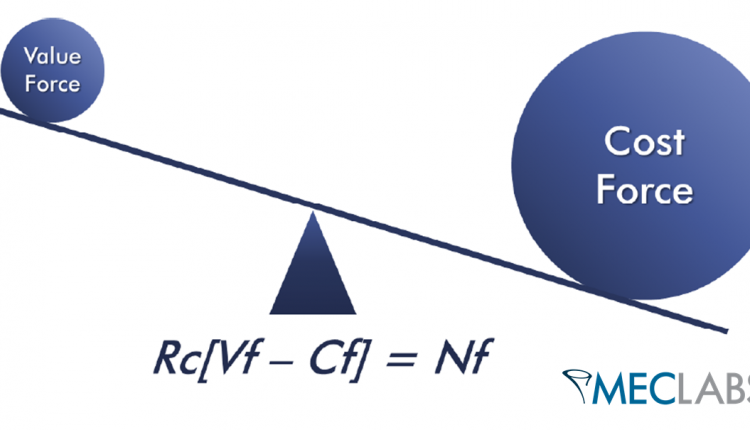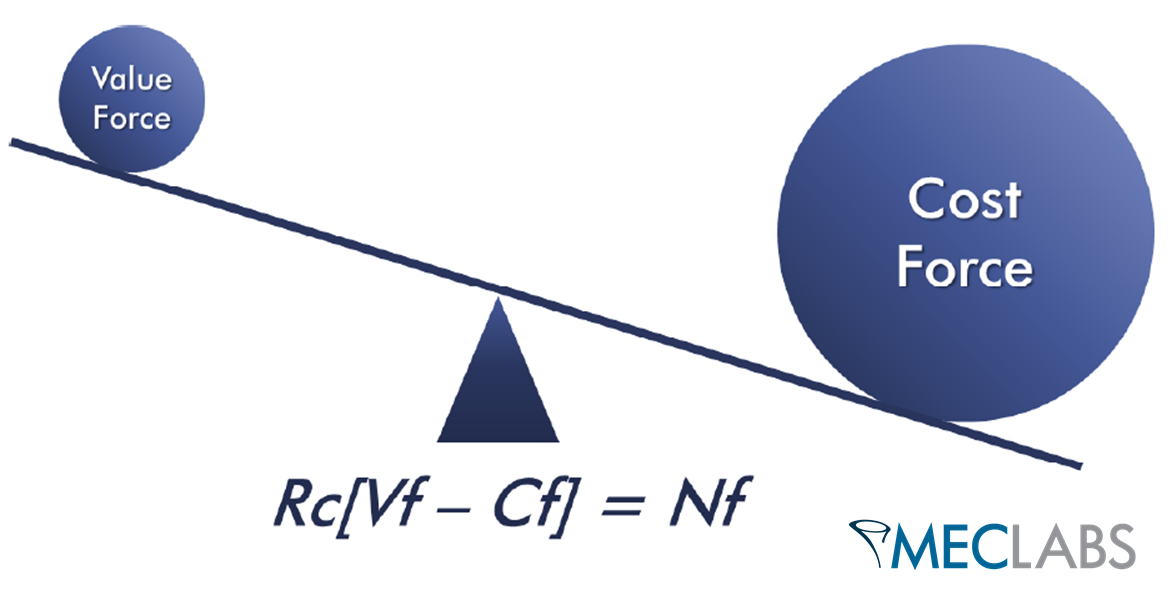Genghis Kahn, Nickelback, head lice, root canals, colonoscopies, Donald Trump, NFL replacements refs, and France.
These are all things more popular than the United States Congress, according to a recent Gallup poll (as reported in Wait Wait…Don’t Tell Me!).
Why is Congress so unpopular? Well, depending on whom you ask, the answer might range from Super PAC money to corporate lobbyists to gerrymandered, uncompetitive districts.
However, let me make the case for a topic much more pertinent to marketers … the value exchange.
(Note: It’s my sincere hope not to make this political but rather focused on what marketers can learn from our national legislature’s unpopularity. Let’s see how I do …)
The value exchange
As Flint McGlaughlin, Managing Director, MECLABS, teaches in our Value Proposition Development online course, for every offer you make to prospective customers, they weigh the value versus the cost when they decide if they will act on your offer.
The only thing that’s certain in life is death, taxes and value exchange
Now you might make the argument that Congress is unpopular because, as the Constitution says, “The Congress shall have Power To lay and collect Taxes …” (source: Fathers, Founding).
And yet, people are willing to pay more money for a better car or nicer house. Why would people who spend more money to drive a Cadillac instead of a Yugo go to such extreme, loophole-filled ways to dodge taxes and fight any increase tooth and nail?
Again … value exchange. Let’s take a closer look, shall we?
When Congress acts on its two most important imperatives – revenue and spending – it often only focuses on just one side of said value exchange. To wit …
Congress recently increased taxes on households that make more than $450,000, so the American public was hyperworried about the “cost force.” (On a landing page, the offer might say, “Can you send us more money for nothing in particular in return?”)
On the flip side, during the recent talks about the sequester spending cuts to the defense budget, all the American public was really thinking about was the “value force” … being taken away from them. (On a landing page, the offer might say, “Would you like something for nothing?”)
So what if, instead, Congress paired cost and value? What if, for example, Congress stated they would “raise taxes 3% to pay for the increase in cost of military veteran healthcare”? Would that affect its approval rating?
No one wants to pay more taxes, but in this way, they are getting value for the cost. And at the very least, the nation could have a fair debate about whether the spending is worth the tax increase, as opposed to looking at each in a vacuum.
Realpolitik
Of course, in reality our Congress and our voters do not face these tradeoffs, since the ends do not meet – the government borrowed 36 cents of every dollar it spent. And there’s the rub …
But since the Federal Reserve likely will not buy a nearly limitless supply of your product, you, my marketing friend, simply cannot overlook the value exchange with your prospective customers:
- Make sure to consider the value exchange for every “ask,” not just the final sale – Sure, it’s one thing to have a strong offer, but the value exchange happens between you and your prospective customers during every ask in your funnel. Is there more value than cost in signing up for your email newsletter? In clicking on your paid search ad? In opening your direct mail piece?
- All cost is not monetary – Obviously, paying cash money for a product is a cost. However, taking the time to watch your YouTube video is also a cost. Your challenge – the value of that video is hidden behind the “play” button. Do you communicate enough value around that video to overcome the cost of taking the time to hit “play,” waiting for the video to buffer, and watching it?
- Value is relative – On my latest visit to the eye doctor, she gave me a free trial of contact lenses. After wearing the lenses, I took a survey about them. The contact lenses were great; I had no problem with them. But the survey missed the boat. I do not have a contact lens problem, the pair I currently wear is totally fine.
So asking questions only about how great the new pair is, not how they compare to my current lenses, does not give the company the info they need to get people to switch.
This is an especially large challenge for new products in an established industry. It is not enough for your product to be valuable. It must be so much more valuable that it overcomes the significant cost of switching, even if the monetary price is lower! (See the second bullet point).
So what Congress really needs, perhaps, is a change in the career background of its members. According to Businessweek, there are 173 lawyers, three engineers, and one mill supervisor in Congress … but no marketers. Hey, 2014 is approaching fast … are you up for the challenge?
Related Resources:
Value Prop: Is there true value in your marketing proposition?
Selling Free Content: Why Seth Godin never gives anything away for free
Customer Value: The 4 essential levels of value propositions





This is a nice article. Considering the value exchange for each “ask” will sure increase the conversion rate. Excellent points raised in this article!